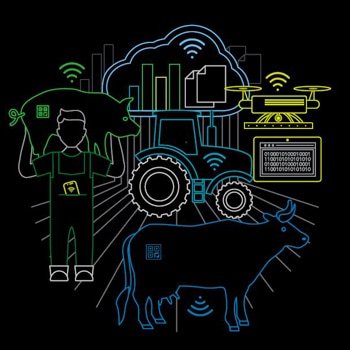Article

Smart Livestock Farming
Potential of Digitalization for Global Meat Supply
Smarter production, nutrition, and waste management, as well as increased animal welfare and better education, have the potential to decrease the impact of livestock farming on our natural resources while increasing the profitability of all market participants.
Key challenges for the meat production sector
Demand for meat has increased dramatically over recent decades. Global production has quadrupled from 80 to over 300 million tonnes between 1963 and today. This development is mainly driven by continuous population growth and rising per capita incomes. In the past, most of the demand growth could be met by increases in slaughter weights, but the growth in animal productivity is expected to slow down in the future.
The livestock sector already uses one third of global arable land and 8% of available freshwater. It is also largely responsible for deforestation and biodiversity loss, and contributes 15% of global CO2 emissions.
As population and incomes are expected to continue their growth, there will also be large increases in demand for meat. Therefore, the objective for the sector must be to fulfill future demand, ensure consistent quality, and to achieve this in a sustainable manner without causing irreparable environmental damage or exceeding global resources.
Smart livestock farming to leverage digitalization
The approach of data-based operating models goes beyond the electronic reproduction of processes by really leveraging new technologies, such as big data, predictive analytics, and IoT. It is based on pattern recognition, resilient networks, and self-organization.
Smart livestock farming aims to achieve more productive, efficient, and sustainable farm operations based on the effective use of digital technologies.
The largest potential lies in individual animal monitoring and analysis, which is referred to as precision livestock farming (PLF). In PLF, tools and sensors are used to continuously and automatically monitor key performance indicators of livestock in the areas of animal health, productivity, and environmental load.
Read more about the potential impact of digitalization on global meat supply and see examples of farming innovations in our publication.
Auch interessant
The Digital Business Case - Done right!
How you can successfully manage your digital transformation


